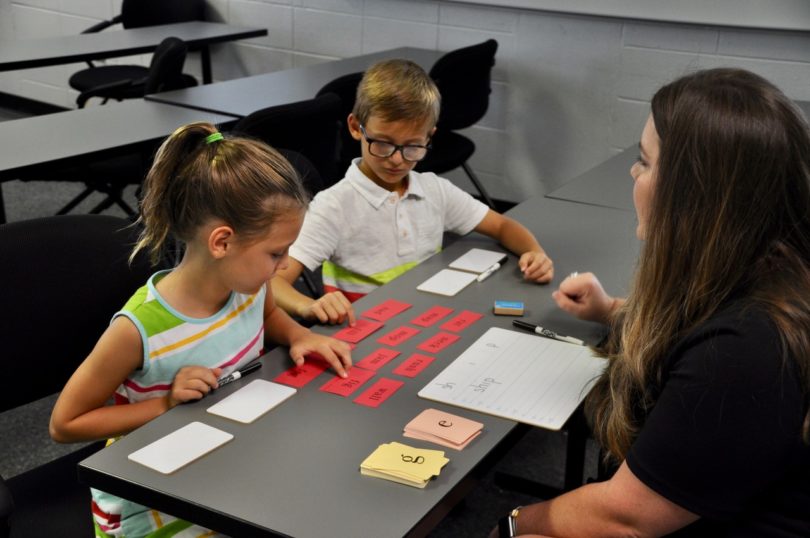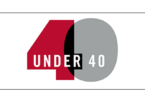While as many as one out of every 10 children in Georgia may have dyslexia, one of the most common learning disabilities, not nearly as many teachers have been trained to recognize its signs.
But thanks to a new bill signed into law on May 2 by Gov. Brian Kemp, new school-based pilot programs, teacher endorsements and guidelines planned for the coming years will begin to turn the tide. As a result, said a University of Georgia professor who helped craft SB48, which goes into effect July 1, not only will students with the learning disability benefit from increased awareness, but students across the state may benefit from a new level of reading instruction.
“Now, because teachers will have more of an awareness of dyslexia and its signs, they will help children get the resources they need,” said Jennifer Lindstrom, an associate professor in the UGA College of Education’s department of communication sciences and special education who also testified to the Senate Study Committee for SB48. “But I also think it’s going to influence standard reading instruction that’s happening right now in schools. Teachers are going to have a deeper understanding of the importance of word-level decoding, that is, phonics-based instruction, and how to implement it.”
SB48, proposed by Sen. P.K. Martin (R-Lawrenceville), addresses dyslexia in schools three ways: It provides for the screening of students in kindergarten through third grade; it creates a new endorsement for teachers in dyslexia; and it creates a handbook for educators, parents and others about the identification and treatment of dyslexia. The bill also provides for ongoing professional development for teachers who will be the first line of defense in identifying the learning disability.
School districts can now apply to be part of a pilot program, starting in fall 2020, to try out the new identification and intervention program. By the end of 2019, teachers will be able to apply for the new dyslexia endorsement, which is now being reviewed by the Georgia Professional Standards Commission (PSC), and the state’s new dyslexia handbook will be available to the public.
In addition to testifying to the Senate committee, Lindstrom also served on a task force to create the teaching endorsement, and she also assisted with the new handbook.
“The (Department of Education), the PSC and the (University System of Georgia) are working together as a result of this newly passed bill to determine how we’re going to implement it and what this means for teacher preparation programs that are part of the USG system,” she said. “I wouldn’t anticipate every institution in the state needing to offer an endorsement in dyslexia, but it’s all going to hinge on what teachers will have to do—because they all need to be prepared.”
Right now, the UGA College of Education offers the only dyslexia-specific program in the state: a graduate-level certificate. Lindstrom said this will likely translate into an endorsement for teachers who complete it, but its courses will also likely find their way to undergraduate students as well, who can take a course on identifying dyslexia as part of their preservice teaching requirements.
UGA’s Certificate in Dyslexia was first proposed in 2016 and its first cohort of students in the online certificate program began in 2018.
“What we would imagine as a result of this legislation is a lot more interest in getting this kind of training,” said Kristin Sayeski, associate professor in the College of Education’s department of communication sciences and special education who coordinates the certificate program with Lindstrom. “So, we can imagine more demand for the current offerings we have.”
This demand could come in the form of learning how to identify dyslexia in children—a requirements that will roll out across the state in four years—while other teachers may want to learn more about teaching methods that can benefit children with dyslexia and other reading disabilities.
That’s the part that excites Lindstrom and Sayeski. In addition to the identification of reading difficulties, this legislation opens the door for more educators to learn new ways of teaching that can benefit all young readers.
Specifically, students who enroll in the dyslexia certificate program learn how to reinforce letter-sound connections and letter patterns though engaging activities. Whether it’s working with magnetic letters, tapping sounds of words or finger drawing letter shapes, children learn through systematic, varied engagement.
“The multimodality component of instruction creates the opportunity for lots of repetition—it becomes fast-paced and fun,” said Sayeski, noting that brain research has shown the differences in the parts of the brain that are engaged when students with and without dyslexia read and write. “By doing it a variety of ways multiple times, you’re actually rewiring the neural connections associated with letter-sound processing. There are some great brain-imaging studies that show this.”
By opening up this type of instruction to a larger population of students, they said, students with and without a reading disability can benefit.
“This is not a special education bill—students don’t have to be identified, even with dyslexia,” said Lindstrom. “They might be—and at that point they would meet certain criteria and could be supported by special education services with a highly trained special education teacher. But students can benefit from this type of structured literacy approach without having to have a special education classification.”








